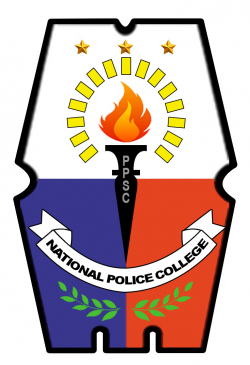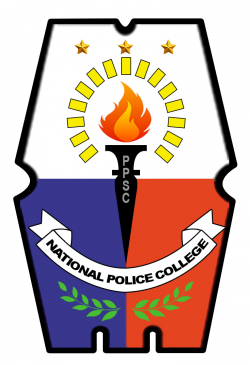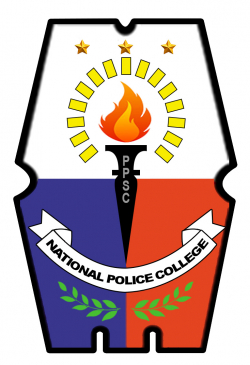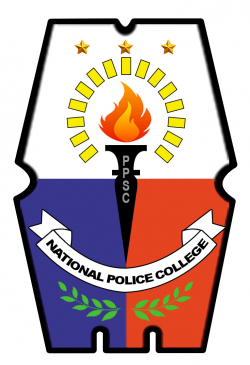REVISITING THE POLICE COMMUNITY RELATIONS PROGRAM IN GENERAL SANTOS CITY: INITIATING COMMUNITY INTERACTION IN INTELLIGENCE OPERATIONS

Type
Thesis
Authors
Category
PSOSEC
[ Browse Items ]
Publication Year
2013
Abstract
An ideal situation in terms of peace and order is expected to boost investment. It is unlikely that investors would venture in the country with an unstable peace and order situation; therefore, it is inevitable to monitor the current status of our country in this context so does declared by the National Statistical Coordination Board, the country’s policy making and coordinating body in statistical matters. Crimes indeed influences the working environment, from the highest level of the government down to the lowest functioning machinery of governance: the Barangay or going deeper, the smallest institution, the household. But how can anybody prevent if not, minimize its occurrence when the country is reeling on how to maximize the full potential of the police despite their unmatched number to the burgeoning population. The plan to attain the police to population ration of 1:50) in 2012 was not realized.
Nevertheless, the government is aware if the problem and its corresponding consequences. DILG Secretary Manuel Roxas II said that there are not enough police on the streets and intelligence gathering is lacking. The hiring of 3,000 new policemen this year will definitely complement to ease the problem, however, there are untapped resources that can be utilized if only given the right recognition, education and challenged to organize themselves and to become partner of the police in anyway, whatever way. The DILG Secretary’s pronouncement is an indicator that the citizen should partner with the police or the other way around. The police cannot effectively prevent crime given the country’s national police to population ratio of 1:747 and a dismal 1:1,393 ratio in General Santos City in 2011. Hence this study was conducted to assess the Police Community Relations Program in General Santos City in initiating community interaction in intelligence operations.
Specifically, the study sought to answer the following questions: How do the respondents assess the Police Community Relations Program in General Santos City in initiating community interaction in intelligence operations in terms of the following variables: PCR programs; Awareness and Education and Organizational Mobilization, and Information Gathering; Information Management and Information Exchange and Processing? What are the problems encountered on the police community relations program in initiating community interaction in intelligence operations? What measures can be proposed to address the problems encountered on the Police Community Relations Program in General Santos City in initiating community interaction in intelligence operations relative to the abovementioned variables? Is there a significant difference in the answers of the three groups of respondents on Police Community Relations Program in General Santos City initiating community interaction in intelligence operations problems encountered and corresponding measures in relation to aforementioned variables? Based on the findings of the study what community interaction initiatives in intelligence operation plan can be proposed?
The hypothesis of the study tried to find out if there is no significant difference among the three groups of respondents in assessing the Police Community Relations Program in General Santos City in initiating community interaction in intelligence operations, problems encountered and corresponding measures to address the problems encountered relative to PCR Programs: Awareness and Education and Organizational Mobilization; Information Gathering; Information Management and Information Exchange and Processing.
The descriptive method of research was utilized in the conduct of the study. Primary sources of data were the results of the interview and survey questionnaires from three (3) groups of respondents comprising of GSCPO Personnel (19), members of the media (32) and Local Government Officials (134). Secondary data were sourced from documentary analysis. The quantitative data obtained from the conduct of the survey were analyzed and evaluated using the following statistical data: Microsoft Excel facilitated the computation of the ANOVA, percentage technique and average weighted mean using 5-point rating scale.
The study showed that the Police Community Relations Program in General Santos City in initiating community interaction in intelligence operations garnered a grand mean of 3.61 or verbally interpreted as “evident”. The Test of Significant difference in the assessment of PCR Program of Gen. Santos City Police Office in initiating community interaction in Intelligence Operation in terms f PCR Programs: Awareness and Education revealed a computed F-value of 11.08 while the tabular F-value was found to be 3.02, while in terms of Organizational Mobilization revealed a computed F-value of 13.38 while the tabular F-value was found to be 3.05. On the other hand, the Information Gathering: Information management, revealed a computed F-value of 6.50 while the tabular F-value was found to be 3.05 and the Information Gathering: Information Exchange and Processing revealed a computed F-value of 6.40 while the tabular F-value was found to be 3.05.
On the identified problems in initiating community interaction in intelligence operations, it garnered a grand mean of 3.23 or verbally interpreted as moderately serious. The test of Significant Difference on the problems encountered on PCR Program of Gen. Santos City Police Office in initiating community interaction in Intelligence Operation in terms of PCR Programs: Awareness and Education revealed a computed F-value of 10.25 while the tabular F-value was found to be 3.05, while in terms of Organizational Mobilization revealed a computed F-value of 14.31 while the tabular F-value was found to be 3.05. On the other hand, the Information Gathering: Information Management, revealed a computed F-value of 12.06 while the tabular F-value was found to be 3.05 and the Information gathering: Information Exchange and Processing revealed a computed F-value of 9.23 while the tabular F-value was found to be 3.05.
Furthermore, the respondents’ assessment on the measures to address the problems encountered in initiating community interaction in intelligence operations garnered a grand mean of 4.62 or verbally interpreted as “moderately recommended”. The test of Significant Difference on the problems encountered on PCR Program of Gen. Santos City Police Office in initiating community interaction in Intelligence Operation in terms of PCR Programs: Awareness and Education revealed a computed F-value of 2.73wgile the tabular F-value was found to be 3.05, while in terms of Organizational Mobilization revealed a computed F-value of 4.62 while the tabular F-value was found to be 3.05. On the other hand, the Information Gathering: Information management, revealed a computed F-value of 15.64 while the tabular F-value was found to be 3.05, the Information Gathering: Information Exchange and Processing revealed a computed F-value of 3.25 while the tabular F-value was found to be 3.05.
Based on the findings, the following conclusions are drawn:
1. The various PCR activities undertaken by GSCPO was generally assessed as effective giving high regard on awareness and education with less consideration on the aspect of employing PCR personnel trained in public safety information gathering procedures. This inadequacy, however, can be enhanced by training. Training imparts more knowledge, skills, insights and better appreciation on the importance of information gathering through PCR activities.
2. The Information Gathering and Management component of PCR activities was generally considered as the most pressing problem being confronted by GSCPO personnel doing PCR work and perceived as moderately serious since PCR personnel are hampered by non-availability of support system such as financial, mobility, communication, etc. which are necessary mechanisms in gathering more information, the lack of necessary skills and ability to gather required information, aggravated by lack of motivation/incentives from the PNP to gain cooperation from the community.
3. Improvement and enhancement of skills of personnel on community relations and public speaking through formal training on PCR that includes modules on Information Collection focusing on volunteer-informant handling, coupled with the implementation of more innovative programs that are socially responsive to the needs and requirements of the community.
4. The views and assessment of the three (3) groups of respondents are different as to the implementation of GSCPO’s PCR Programs and the degree of the problems encountered in initiating community interaction in Intelligence Operation. However, the same groups of respondents were in conformity on their assessment on the measure which is more awareness and education activities to address the problems encountered.
5. The proposed community interaction initiatives in intelligence operations plan for GSCPO must be implemented as this is vital, relevant, timely and indispensable to the implementation of PCR programs and to maximize its full potential to collect information which is necessary to come up a good intelligence assessment.
6. The proposed PCR –Information Gathering enhancement program should be pursued under a phase-by-phase approach wherein the various Program Components should be implemented based on the current skills of every PCR personnel.
7. Further research work must be conducted on the relevance of GSCPO’s PCR Program to Information Gathering activities in order to fully validate the findings of this study.
From the conclusions drawn, the following are recommended:
1. The Directorate for PCR at NHQ, Camp Crame should conduct a one-month intensive PCR Training with the GSCPO as the pilot CPO, where information gathering procedures are incorporated to ensure that PCR personnel are competent enough to implement the various PCR initiatives and at the same time act as conduit in information gathering activities of the City Police Office.
2. To improve the Information Gathering and Management component of PCR activities, Section Chiefs of both PCR and Intelligence should together liaise with the Chairperson of the Committee on Public Order and Safety, Committee on Appropriations and Committee on Education for the purpose of inclusion in and provision of funding of PCR Program thru the Annual Investment Plan and the Integrated Area/Community Public Safety Plan.
3. GSCPO should strengthen the networking and partnership with the Academe for technical and educational assistance and deliberately work on possible short term courses/seminars such as but not limited to public speaking, report writing, etc. these should be responsive to the current community public safety concerns of the people.
4. Propose for the creation of Police-Business-Academe Conference for the Advancement of Peace and Public Safety. The tri-sector conference can act as an advisory body n issues concerning the improvement of policing initiatives being introduced by whoever will assume the City Director. The conference may assist the Police in research studies for the improvement of law enforcement and public safety concerns.
5. The proposed community interaction initiatives in intelligence operations plans for GSCPO must be adopted and subsequently implemented in order to maximize its full potential in the information collection activities which is necessary to come up a good intelligence assessment.
6. The PCR-Information Gathering Enhancement Program should be vigorously pursued and continuously implemented based on the current skills of every PCR personnel.
Nevertheless, the government is aware if the problem and its corresponding consequences. DILG Secretary Manuel Roxas II said that there are not enough police on the streets and intelligence gathering is lacking. The hiring of 3,000 new policemen this year will definitely complement to ease the problem, however, there are untapped resources that can be utilized if only given the right recognition, education and challenged to organize themselves and to become partner of the police in anyway, whatever way. The DILG Secretary’s pronouncement is an indicator that the citizen should partner with the police or the other way around. The police cannot effectively prevent crime given the country’s national police to population ratio of 1:747 and a dismal 1:1,393 ratio in General Santos City in 2011. Hence this study was conducted to assess the Police Community Relations Program in General Santos City in initiating community interaction in intelligence operations.
Specifically, the study sought to answer the following questions: How do the respondents assess the Police Community Relations Program in General Santos City in initiating community interaction in intelligence operations in terms of the following variables: PCR programs; Awareness and Education and Organizational Mobilization, and Information Gathering; Information Management and Information Exchange and Processing? What are the problems encountered on the police community relations program in initiating community interaction in intelligence operations? What measures can be proposed to address the problems encountered on the Police Community Relations Program in General Santos City in initiating community interaction in intelligence operations relative to the abovementioned variables? Is there a significant difference in the answers of the three groups of respondents on Police Community Relations Program in General Santos City initiating community interaction in intelligence operations problems encountered and corresponding measures in relation to aforementioned variables? Based on the findings of the study what community interaction initiatives in intelligence operation plan can be proposed?
The hypothesis of the study tried to find out if there is no significant difference among the three groups of respondents in assessing the Police Community Relations Program in General Santos City in initiating community interaction in intelligence operations, problems encountered and corresponding measures to address the problems encountered relative to PCR Programs: Awareness and Education and Organizational Mobilization; Information Gathering; Information Management and Information Exchange and Processing.
The descriptive method of research was utilized in the conduct of the study. Primary sources of data were the results of the interview and survey questionnaires from three (3) groups of respondents comprising of GSCPO Personnel (19), members of the media (32) and Local Government Officials (134). Secondary data were sourced from documentary analysis. The quantitative data obtained from the conduct of the survey were analyzed and evaluated using the following statistical data: Microsoft Excel facilitated the computation of the ANOVA, percentage technique and average weighted mean using 5-point rating scale.
The study showed that the Police Community Relations Program in General Santos City in initiating community interaction in intelligence operations garnered a grand mean of 3.61 or verbally interpreted as “evident”. The Test of Significant difference in the assessment of PCR Program of Gen. Santos City Police Office in initiating community interaction in Intelligence Operation in terms f PCR Programs: Awareness and Education revealed a computed F-value of 11.08 while the tabular F-value was found to be 3.02, while in terms of Organizational Mobilization revealed a computed F-value of 13.38 while the tabular F-value was found to be 3.05. On the other hand, the Information Gathering: Information management, revealed a computed F-value of 6.50 while the tabular F-value was found to be 3.05 and the Information Gathering: Information Exchange and Processing revealed a computed F-value of 6.40 while the tabular F-value was found to be 3.05.
On the identified problems in initiating community interaction in intelligence operations, it garnered a grand mean of 3.23 or verbally interpreted as moderately serious. The test of Significant Difference on the problems encountered on PCR Program of Gen. Santos City Police Office in initiating community interaction in Intelligence Operation in terms of PCR Programs: Awareness and Education revealed a computed F-value of 10.25 while the tabular F-value was found to be 3.05, while in terms of Organizational Mobilization revealed a computed F-value of 14.31 while the tabular F-value was found to be 3.05. On the other hand, the Information Gathering: Information Management, revealed a computed F-value of 12.06 while the tabular F-value was found to be 3.05 and the Information gathering: Information Exchange and Processing revealed a computed F-value of 9.23 while the tabular F-value was found to be 3.05.
Furthermore, the respondents’ assessment on the measures to address the problems encountered in initiating community interaction in intelligence operations garnered a grand mean of 4.62 or verbally interpreted as “moderately recommended”. The test of Significant Difference on the problems encountered on PCR Program of Gen. Santos City Police Office in initiating community interaction in Intelligence Operation in terms of PCR Programs: Awareness and Education revealed a computed F-value of 2.73wgile the tabular F-value was found to be 3.05, while in terms of Organizational Mobilization revealed a computed F-value of 4.62 while the tabular F-value was found to be 3.05. On the other hand, the Information Gathering: Information management, revealed a computed F-value of 15.64 while the tabular F-value was found to be 3.05, the Information Gathering: Information Exchange and Processing revealed a computed F-value of 3.25 while the tabular F-value was found to be 3.05.
Based on the findings, the following conclusions are drawn:
1. The various PCR activities undertaken by GSCPO was generally assessed as effective giving high regard on awareness and education with less consideration on the aspect of employing PCR personnel trained in public safety information gathering procedures. This inadequacy, however, can be enhanced by training. Training imparts more knowledge, skills, insights and better appreciation on the importance of information gathering through PCR activities.
2. The Information Gathering and Management component of PCR activities was generally considered as the most pressing problem being confronted by GSCPO personnel doing PCR work and perceived as moderately serious since PCR personnel are hampered by non-availability of support system such as financial, mobility, communication, etc. which are necessary mechanisms in gathering more information, the lack of necessary skills and ability to gather required information, aggravated by lack of motivation/incentives from the PNP to gain cooperation from the community.
3. Improvement and enhancement of skills of personnel on community relations and public speaking through formal training on PCR that includes modules on Information Collection focusing on volunteer-informant handling, coupled with the implementation of more innovative programs that are socially responsive to the needs and requirements of the community.
4. The views and assessment of the three (3) groups of respondents are different as to the implementation of GSCPO’s PCR Programs and the degree of the problems encountered in initiating community interaction in Intelligence Operation. However, the same groups of respondents were in conformity on their assessment on the measure which is more awareness and education activities to address the problems encountered.
5. The proposed community interaction initiatives in intelligence operations plan for GSCPO must be implemented as this is vital, relevant, timely and indispensable to the implementation of PCR programs and to maximize its full potential to collect information which is necessary to come up a good intelligence assessment.
6. The proposed PCR –Information Gathering enhancement program should be pursued under a phase-by-phase approach wherein the various Program Components should be implemented based on the current skills of every PCR personnel.
7. Further research work must be conducted on the relevance of GSCPO’s PCR Program to Information Gathering activities in order to fully validate the findings of this study.
From the conclusions drawn, the following are recommended:
1. The Directorate for PCR at NHQ, Camp Crame should conduct a one-month intensive PCR Training with the GSCPO as the pilot CPO, where information gathering procedures are incorporated to ensure that PCR personnel are competent enough to implement the various PCR initiatives and at the same time act as conduit in information gathering activities of the City Police Office.
2. To improve the Information Gathering and Management component of PCR activities, Section Chiefs of both PCR and Intelligence should together liaise with the Chairperson of the Committee on Public Order and Safety, Committee on Appropriations and Committee on Education for the purpose of inclusion in and provision of funding of PCR Program thru the Annual Investment Plan and the Integrated Area/Community Public Safety Plan.
3. GSCPO should strengthen the networking and partnership with the Academe for technical and educational assistance and deliberately work on possible short term courses/seminars such as but not limited to public speaking, report writing, etc. these should be responsive to the current community public safety concerns of the people.
4. Propose for the creation of Police-Business-Academe Conference for the Advancement of Peace and Public Safety. The tri-sector conference can act as an advisory body n issues concerning the improvement of policing initiatives being introduced by whoever will assume the City Director. The conference may assist the Police in research studies for the improvement of law enforcement and public safety concerns.
5. The proposed community interaction initiatives in intelligence operations plans for GSCPO must be adopted and subsequently implemented in order to maximize its full potential in the information collection activities which is necessary to come up a good intelligence assessment.
6. The PCR-Information Gathering Enhancement Program should be vigorously pursued and continuously implemented based on the current skills of every PCR personnel.
Number of Copies
1
| Library | Accession No | Call No | Copy No | Edition | Location | Availability |
|---|---|---|---|---|---|---|
| NPC Library | 676119 | 1 | Yes |




